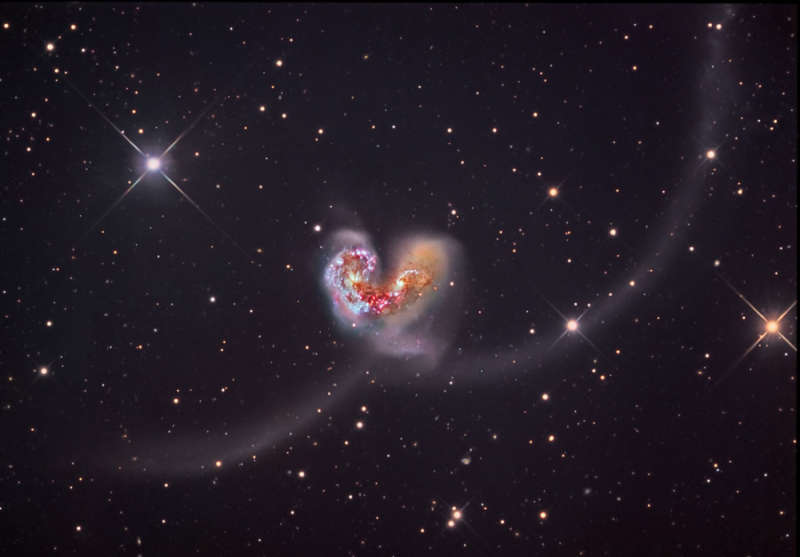
|
Credit & Copyright: Star Shadows Remote
Observatory and PROMPT/CTIO
(Jack Harvey, Steve Mazlin, Rick Gilbert, and Daniel Verschatse)
Explanation:
Some 60 million light-years away in the southerly
constellation
Corvus, two large galaxies
collided.
But the stars in the two galaxies cataloged as
NGC 4038
and NGC 4039 don't collide
in the course of the ponderous, billion year or so
long
event.
Instead, their large clouds of
molecular
gas and dust do, triggering furious
episodes of star formation near the center of the
cosmic wreckage.
Spanning about 500 thousand light-years,
this
stunning view also reveals new star clusters and
matter flung far from the scene
of the accident by
gravitational tidal
forces.
Of course,
the visual appearance of the far-flung arcing structures
gives the galaxy pair its popular name - The
Antennae.
(Jack Harvey, Steve Mazlin, Rick Gilbert, and Daniel Verschatse)
|
January February March April May June July August September October November December |
| |||||||||||||||||||||||||||||||||||||||||||||||||||||||
NASA Web Site Statements, Warnings, and Disclaimers
NASA Official: Jay Norris. Specific rights apply.
A service of: LHEA at NASA / GSFC
& Michigan Tech. U.
Based on Astronomy Picture
Of the Day
Publications with keywords: molecular cloud
Publications with words: molecular cloud
See also:
